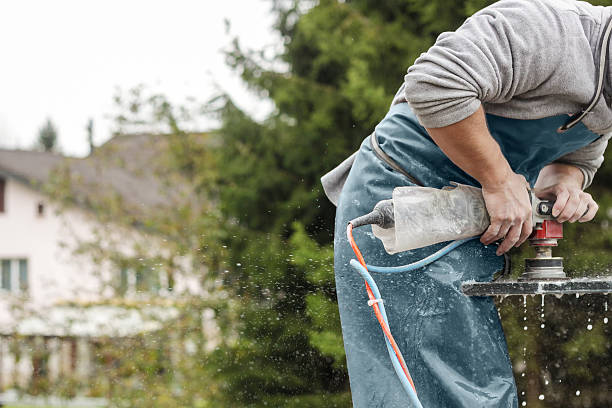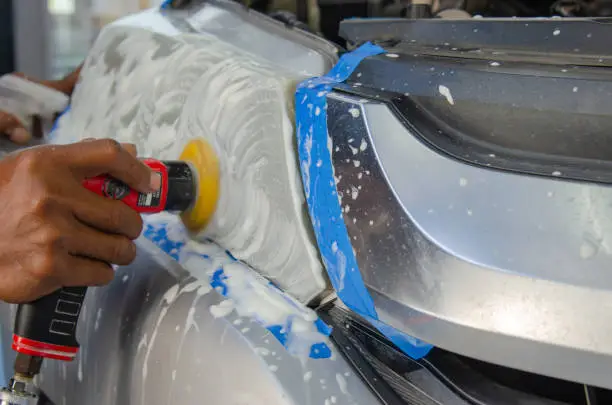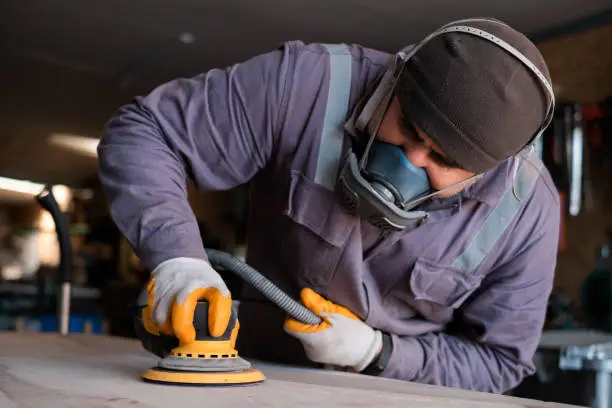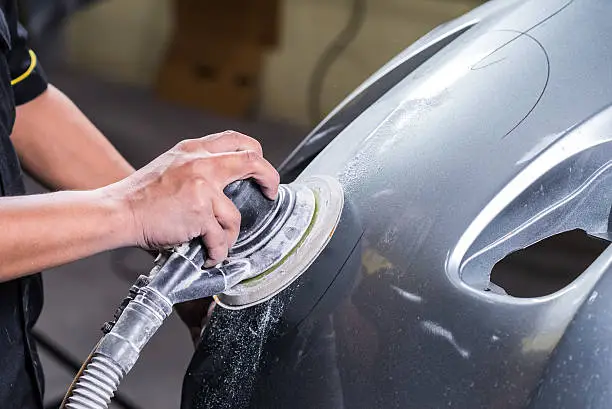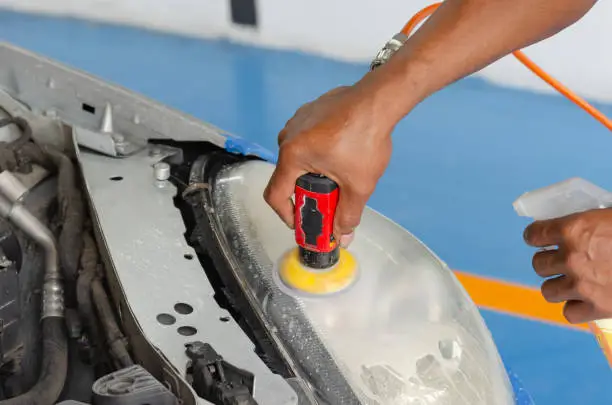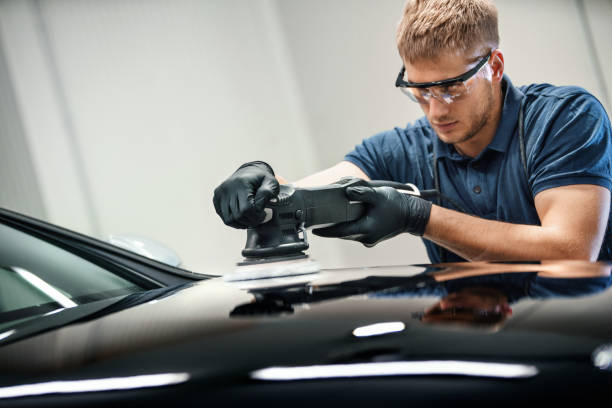If you have ever built anything using wood from scratch, have wanted to smooth out a surface, or have needed to polish a surface, chances are, you have used a sander. Wet sanding is a helpful technique that gives even better results. But, can you wet sand with an orbital sander?
You can use an orbital sander to wet sand, but should take safety precautions to ensure that neither your tools nor you get hurt. Additionally, wet sanding normally makes fine adjustments to a surface, something an orbital sander may not help you with.
Using an orbital sander to wet sand can be beneficial, but only if done correctly. Read on to learn more about wet sanding, orbital sanders, and how the two can be compatible.
What is Wet Sanding
Wet sanding, similar to “normal” or dry sanding, is a process that can help polish or perfect a surface. Wet sanding involves some sort of an abrasive and a liquid, like water, to sand down a material.
The liquid involved in wet sanding removes any remaining particles leftover from the dry sanding process and particles created in the final wet sanding.
Wet sanding almost always occurs after dry sanding or at the late stages of the project.
Wet Sanding Vs Dry Sanding
Wet sanding also differs from dry sanding and is used for different purposes. Dry sanding often slims down an uneven corner, smooths out a major blemish, or eliminates major bumps, curves, and errors.
Wet sanding, alternatively, eliminates the minor issues you might find on your surface. Whether it’s a scratch caused by dry sanding, an incredibly small paint error that must be handled precisely, or any other small issues.
Wet sanding also creates a nice, evenly gleaming surface after completion. Though dry sanding can help in making this perfect surface, wet sanding ensures that the small imperfections are corrected, making your surface perfectly polished and clean from leftover particles or errors.
However, this method isn’t suitable for every surface as it can do more damage than good. For example, wood surfaces get damaged when they come in contact with water, so dry sanding is preferred for them.
What is Orbital Sanders
An orbital sander, also called a random orbital sander, is a handheld machine used to sand down a surface. The sander works through a ball-bearing mechanism attached to the actual sanding pad. When you use the machine, the sanding pad rotates at random intervals of diameter and circumference. It means, while the machine may always be going in one direction, the actual circles it makes will be of differing sizes. This feature is incredibly helpful to prevent having one part of the surface sanded further than the other as the orbital sander makes sure no same circle is done twice.
Additionally, the orbital sander is great at covering a wide surface area over a shorter amount of time than doing it by hand and helps ensure the surface is consistent with no large scratches at any point. Orbital sanders are most frequently used for preparing a surface for painting, but can also be used to sand down a small area very quickly.
Orbital sanders are great for use with wood, plastic, and some metals, and can be used for different jobs. They can also be used on drywall sanding projects.
Considerations When Wet Sanding With an Orbital Sander
Although not frequently, orbital sanders can be used for wet sanding. When doing so, you should consider two points: if orbital sanding is the best for the desired job and if you can do it safely.
Orbital Sanding Isn’t for Every Job
As mentioned previously, orbital sanding is best used for initial sanding to prepare a surface. Orbital sanders are often very aggressive in their sanding.
Though the degree of abrasion depends on the sandpaper’s grit, orbital sanders move quickly. So, even if you use a relatively soft grit, you may still sand more than you wish to. That’s why orbital sanders aren’t always best for every task.
The other issue that some people encounter when wet sanding is that they do it over a very small, precise surface. For example, many people wet sand car parts to create a perfectly shiny surface. With an orbital sander, though you could wet sand the blemish to make your car gleaming, you may cause other blemishes that would need to be removed. Generally, orbital sanders aren’t the best fit for the job when it comes to wet sanding.
Safety Concerns When Wet Sanding With an Orbital Sander
While you can use an orbital sander for wet sanding, make sure everything is safe, including yourself and your tools. Using any electric power tools with liquid can be risky. If the water makes contact with the motor, for instance, or if your connecting wire is frayed and water makes contact with it, you run the risk of electrocution. Most orbital sanders won’t shock you hard enough to be deadly, but they can certainly hurt. Be sure to use air sander or proper safety equipment.
One of the best ways to protect your gear is to opt for sanders with double insulation that can prevent water from getting in. Additionally, considering the safety of your sander is important. If your sander gets water on it and it begins to oxidize, rust can wear out your orbital sander, quickly making it both unable to work with and possibly dangerous. That’s why you should always keep your equipment dry and regularly check your sander for rust and other potential dangers.
Final Thoughts
While you can use an orbital sander when wet sanding, it normally isn’t recommended. Wet sanding is used to make small, precise, and final adjustments to your surface. It’s better to choose wet sander that is designed for wet sanding.
An orbital sander is often too aggressive and covers too large of a surface area, making it undesirable for the job wet sanding is supposed to do.
If you do decide to use an orbital sander for wet sanding, be sure to take proper safety precautions. Ensure water doesn’t mix with wires or electric parts and check for rust or damage to your sander.

